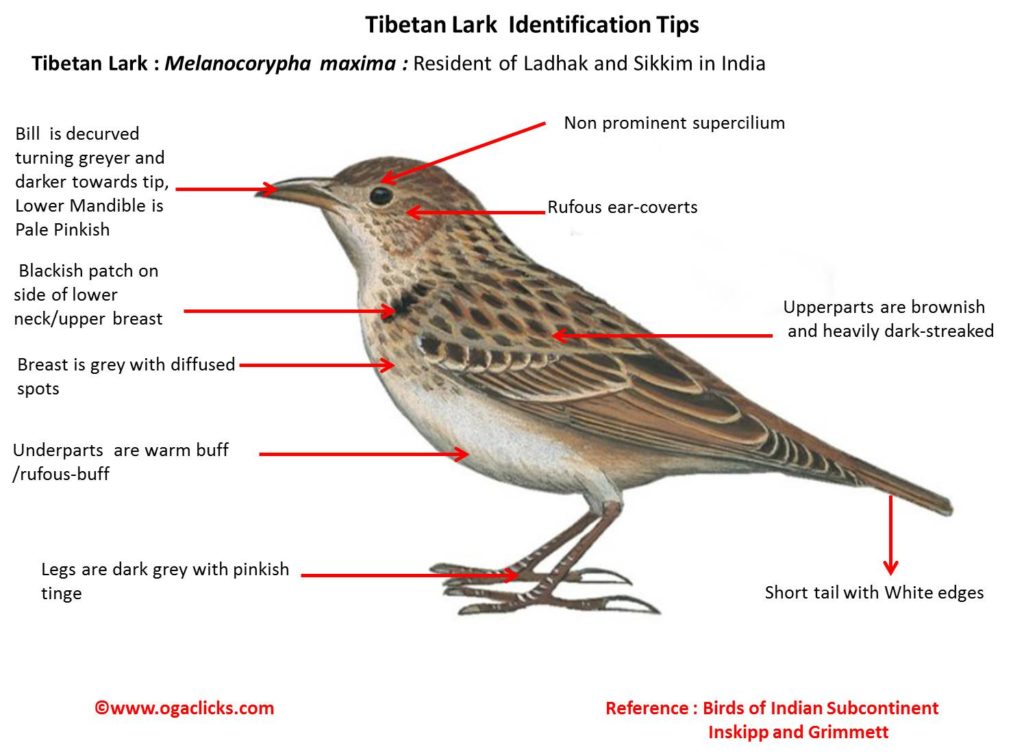
Tibetan lark Melanocorypha maxima
Etymology:
- Melanocorypha : Greek Word melas –black; koruphos-
- Maxima : Latin word for the greatest
Distribution in India: Found in Ladhak (Hanle) and Sikkim in India.
Description: Size of 21–22 cm; Wt. of 75 g. It is a distinctive and the largest and most bulky Eurasian lark, with rather long, comparatively slender, slightly decurved bill, broad longish wings, fairly short tail. It has poorly marked head, heavily dark-streaked brownish upperparts, dark grey-brown upperwing-coverts and tertials with pale tips and edges; remiges and rectrices are blackish-brown, secondaries and inner primaries with broad white tips, most rectrices have whitish tips and width increasing outwards, outermost pair extensively white; mainly whitish below, blackish patch on side of lower neck/upper breast, pale underwing-coverts; iris is dark brown; bill is pale pinkish basally, turning grayer and darker towards tip; legs are dark grey with pinkish tinge. Both the sexes are alike in plumage, female is smaller than male. The juvenile has distinct pale buffish or whitish fringes and dark sub-terminal bands above, including wing-coverts and tertials, lacks dark breast-side patch but shows indistinct dark spots on side of breast.
Habitat: It is found in grassy, somewhat wet areas, such as marshlands by lakes and rivers. It is found between 3200 m and 4600 m.
Food habits: It eats seeds; tender leaves, berries and invertebrates It forages on ground.
Breeding habits: They breed in Apr–Aug. They lay two broods. The male in song flight has a slow wing beat, often gliding on V-held wings low over ground before landing. The nest is built by female. The nest is a cup of grass on ground. They lay a clutch of 2 -3 eggs. The young fed by both parents.